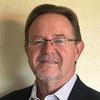Check out what is new in Dairy Cattle
Find the best technical articles, forums, and videos on Dairy Cattle at Engormix. Enter now and interact with the world's largest agricultural social network.
The inclusion of plant extracts in livestock feed supplements has been widely researched as a strategy to replace synthetic feed additives and improve animal health and production traits. Among several plant metabolites, tannins have attracted significant attention in regards to dairy cows. Tannins are water soluble plant polyphenol metabolites known for a binding affinity for proteins, amino acids, metal ions and polysaccharides (Makkar, 2003; Mueller-Harvey, 2006). They have the ability to...
Comments : 0
Recommendations: 0
INTRODUCTION Finishing diets are composed of about 45% to 55% starch based on typical dietary corn inclusion (Samuelson et al., 2016). While the rumen is the primary site of starch digestion, it is highly dependent on grain source, processing method, and degree of grain processing (Owens et al., 1997). Steam flaking corn usually improves cattle performance due to an increase of starch digestibility compared with simpler processing methods like dry-rolling (Zinn...
Comments : 0
Recommendations: 0
Introduction This era may be conferred as the era of nanotechnology due to the use of nanoparticles in diversified purposes such as in the fields of medicine, engineering, information, environmental technology [1,2], pigments, food, electronics appliances [3], biological, and pharmaceutical applications [4,5], etc. Nanomaterials are also used in the fields of biology (molecular and cellular), biotechnology, mineral nutrition, physiology, reproduction, pharmacology, etc., in both...
Comments : 2
Recommendations: 0
Introduction Antimicrobials, including antibiotics, antivirals, antifungals, and antiparasitics, are used to prevent and treat infections in humans, animals, and plants. 1 Microbes can become resistant to antimicrobials as a result of ineffective or prolonged antimicrobial treatment. This resistance may be “innate” owing to the slow and long evolutionary process that microorganisms undergo to adapt to changing environmental conditions; this adaptation is...
Comments : 0
Recommendations: 2
“Don’t drink, don’t smoke, and take your multi-vitamin.” Any pregnant woman can tell you this is the advice they receive from the moment they know they are pregnant. Extensive research in humans and animals has confirmed the long-term impact of nutrition during gestation. Prenatal nutrition can permanently affect both tissues and organs, with life-long consequences to growth and health. Known as epigenetics, it’s the study of changes in gene function...
Comments : 0
Recommendations: 1
In a previous article I published here, I presented the different opinions that exist about the causes of global warming in recent decades, and I also brought to the attention of readers the opinion of researchers who deny that human activity in the last 150 years is the main cause for it. According to these researchers, global warming is part of a million-year-old cyclical...
Comments : 9
Recommendations: 8
.mp4&w=3840&q=75)
Dr. Stefano Vandoni presents during Balchem and AB Vista's sponsored event at TotalDairy UK, "Choline: it's not optional, it's required."...
Comments : 3
Recommendations: 5
INTRODUCTION The importance of nutritional management for improving production and minimizing environmental impacts from beef and dairy cattle industry is well-established (McAllister et al., 1996; Havlík et al., 2014; Bach et al., 2020). Corn grain is the most commonly used cereal grain for dairy and beef production in the United States and its high starch content yields energy to support greater levels of milk and meat production (Giuberti et al., 2014)....
Comments : 0
Recommendations: 2
There is no question that the ongoing narrative concerning climate change and various “man-induced” gas emissions (including ammonia, carbon dioxide, methane and nitrous oxide) includes dairy production. While many producers (and others involved in agriculture) may not agree with the significance or level of gas contributions of agriculture to the total production, that disagreement may be somewhat irrelevant. The discussion, social media uproar, political activism and...
Comments : 3
Recommendations: 1
1. Introduction Foot-and-mouth disease (FMD), also called as Aptho fever, is highly contagious, acute, viral disease of cloven-hoofed animals. It is economically important viral disease in farm animals like cattle, buffalo, goat, sheep and pigs [1]. Wild ruminants like deer and antelope are also susceptible to this disease [2]. It has high morbidity but low mortality. Mortality is mostly seen in young animals. FMD is characterized by blister formation and erosion in and around...
Comments : 1
Recommendations: 2
Choline – It’s Essential Do your transition cows look like the cow on the left? Or do your transition cows look like the cow on the right? As with any...
Comments : 4
Recommendations: 2
The climate issue has been in the headlines lately. This article was written in the week that begins in Glasgow, Scotland, the Climate Conference, with the participation of many world leaders announcing the intention to completely eliminate greenhouse gas emissions from burning fossil fuels (coal, oil and gas), by 2050. The global dairy industry is in this context and it is also in the headlines, and people point the finger of blame at the meat and milk industry, in that the emission of...
Comments : 5
Recommendations: 4
Summer heat stress has been considered in these days as one of the greatest causes for losses in the world dairy sector. Italian Breeders Association (A.I.A.), adopted the Summer to Winter ratio (S:W) index, a heat stress assessment tool based on the ratio between summer (July – September) and winter (January – March) farm performances. S:W ratio has been developed in Israel and adopted recently in Italy and other countries, as a tool for detecting performance pitfalls in summer...
Comments : 0
Recommendations: 0
.mp4&w=3840&q=75)
Combining advanced core design with industry-leading encapsulation technology, Balchem delivers the most unique rumen-protected choline product on the market today....
Comments : 1
Recommendations: 1
Choline has long been considered an essential nutrient and has an identified requirement in most species, including humans. Though most can synthesize choline endogenously, it cannot be produced in sufficient quantity to satisfy the body’s requirements and must be...
Comments : 0
Recommendations: 2
Introduction Fatty liver occurs in approximately 50-60% of dairy cows at orshortly after calving2,3. It occurs because the cow mobilizes energy from adipose tissue in response to hormonal changes at calving and negative energy balance immediately after calving when the cow cannot consume enough energy to support maintenance and milk production. However, it can also occur anytime the cow experiences negative energy balance from other factors such as sickness, suboptimal...
Comments : 0
Recommendations: 0
Importance of animal origin foods and trends of consumption Given their high nutrient density, animal-origin foods have been staples of the human diet along our evolutionary history. Indeed, evidence of meat and bone marrow consumption in hominins can be traced back to around 2.5-2.8 million years ago (De Heinzelin et al., 1999, Thompson et al., 2019). On the other hand, milk from ruminants was introduced into our diets more recently, at least 8500...
Comments : 0
Recommendations: 1
Introduction All living organisms depend on the continuous supply of available phosphorus (P) sources for a plethora of metabolic processes. Fertilizer and feed phosphates are obtained to a large extent from rock phosphate. This is a non-renewable resource, and the global distribution of rock phosphate reserves is not uniform. Concurrently, P accumulation in areas with high livestock production density may be harmful to the environment. Hence,...
Comments : 0
Recommendations: 0
Introduction The nutritional management of young dairy calves can have both short- and long-term effects, from influencing morbidity and mortality rates (Urie et al., 2018a) to reproductive efficiency and first-lactation milk yield (Faber et al., 2005; Soberon et al., 2012; Gelsinger et al., 2015). Although major improvements in calf nutritional strategies have been made over the past decade, dairy calves continue to suffer from the highest rates of...
Comments : 1
Recommendations: 0
Introduction Gut health is intrinsically linked with animal health, which in turn dictates cost efficient production. Animal health and productivity are intrinsically linked, as are gut health and animal health. In many diseases, diet is implicated as a contributing factor by having direct effects on host metabolism, immune responses, and microbiome composition, subsequently altering disease susceptibility (Plaizier et al. 2018). Gut health is defined...
Comments : 0
Recommendations: 2



.jpg&w=3840&q=75)


.jpg&w=3840&q=75)















